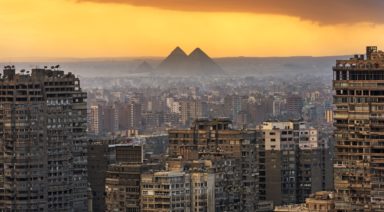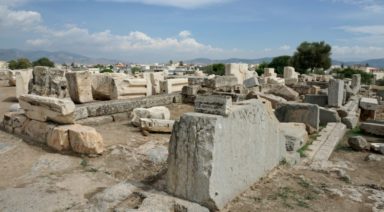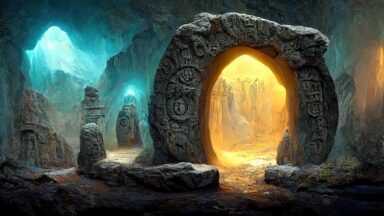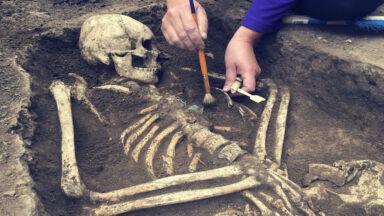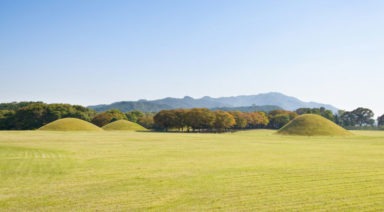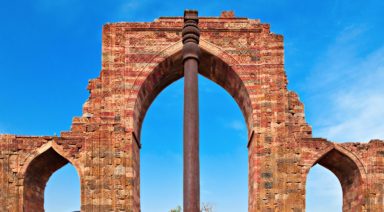The Hollow Earth Theory and Underground Civilizations

If you could choose to explore the furthest reaches of outer space, or the deepest depths of the Earth, which would you choose?
Before you answer, consider this: Some believe there is much more to the inner Earth than rock and molten lava.
Supporters of Hollow Earth theory (also known as the inner earth theory) posit traveling to the depths of the Earth would lead to other environments and perhaps even human beings residing there. Intrigued?
Take a look at the many groups of people who believe in or research hollow Earth, and decide for yourself what the Earth’s interior may have to offer for those who dare to explore it.
What is the Hollow Earth Theory?
In a nutshell, the idea of a Hollow Earth posits that “planet Earth is either wholly hollow or otherwise, and contains a substantial interior space.”
Beliefs about the specifics of the inner Earth (video/inner-Earth) vary but generally revolve around underground civilizations, technological and spiritual advancements, and alternative — even paradise-like — environments. Supporters of this theory claim evidence to support it has been stifled by scientific communities such as NASA.
Ancient Indian Beliefs About Inner Earth
Some support for the hollow Earth theory comes from two Ancient Indian groups: the Macuxi Indians and the Hopi Indians.
Macuxi Indians
The Macuxi claim that a vast network of tunnels “connects our world to mysterious chambers located under the surface.”
This indigenous group, residing in the Amazonian countries of Brazil, Guyana, and Venezuela, have legends in their oral tradition that speak of an entrance to the Earth. They mention entering a cavern and traveling 13 to 15 days until they reach the Earth’s interior, which is said to be where giants live.
Macuxi legends name the giants as the protectors of the inner Earth.
Hopi Indians
Alongside the Macuxi, the Hopi Indians also profess they emerged from an underground shelter after the flood destroyed the Third World. They believe their ancestors derived from this environment.
In the Hopi culture, they specifically reference emerging from the Grand Canyon and also mention mysterious ant-like gods and flying shields.
Is There Proof About Hollow Earth?
Explorations by various individuals throughout history brought about discoveries that support the inner Earth theory.
Admiral Richard E. Byrd of the United States Navy flew to the North Pole in 1926, as well as the South Pole in 1929. He referenced the North Pole as the Center of the Great Unknown and also wrote of his excursions in his diary.
In his descriptions, he references allegedly entering the hollow interior of the Earth, which included mountains, lakes, and rivers as well as animals and vegetation. He also reports finding cities, civilizations, and emissaries of the inner Earth civilization called Agartha.
More research about this excursion mentions that Byrd found Neuschwabenland, “which featured underground caverns flowing with warm water and signs of vegetation,” but neither he nor his crew could stay longer to explore due to the aircraft bombardment.
Other individuals are also said to have explored these openings to inner Earth, including William Reed, who wrote Phantom of the Poles in 1906. He supported the hollow Earth theory, but without the inner sun or interior shells.
More recently in 2005, Steven Currey Expeditions planned to go to the North Pole region to explore a possible opening into the inner Earth.
Current Ideas Regarding Hollow Earth
Those from many walks of life have looked into the Hollow Earth theory and what lies within the Earth, from alien theorists, telepathic communicators, and archaeologists.
Telepathic Communicator
While even believers hold up Hollow Earth Theory as, indeed, a theory, Dianne Robbins believes she has inner Earth proof — her telepathic interactions with the civilizations living in the underground civilization of Agartha, which she describes as a network of about 120 subterranean cities.
In an interview with Vice, Robbins describes both the inner Earth environment and her interactions with those who live inside the Earth.
Robbins says the center of the Earth is a central sun held in place by gravity, and that there’s much more land than the ocean in hollow Earth. She claims the individuals are physical humans like we are, but live in “peace, isolation, and seclusion, and through this, they have gained their immortality.”
Her message from inner Earth’s inhabitants?
“Just call for peace for the planet, because we can only evolve from peace.”
Archaeologists
In modern-day Germany, thousands of underground tunnels dating to the Stone Age have been studied by researchers including German archaeologist Dr. Heinrich Kusch. They stretch throughout Europe from Scotland to Turkey but do not all link up.
Kusch claims these ancient highways have been found under dozens of Neolithic settlements across Europe.
What Do You Think about the Hollow Earth theory?
Hollow Earth Theory continues to interest believers and skeptics alike.
The notion has captured the attention of explorers and researchers while rooting ancient cultures with their history. Accounts and evidence widely vary, and at the very least, serves as a question to consider.
Could there be more to the Earth right under our feet?
Want more like this article?
Don’t miss Ancient Civilizations on Gaia to journey through humanity’s suppressed origins and examine the secret code left behind by our ancestors.
The Book of Enoch Might Tell a Different Story of the Pyramids
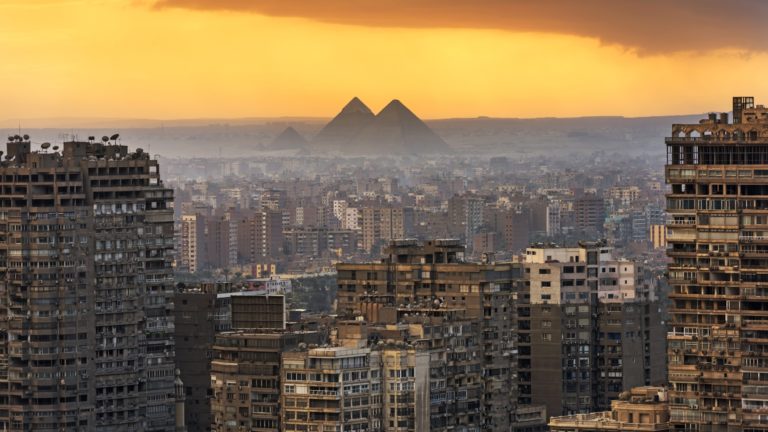
Biblical stories are often fantastical, unbelievable, and sometimes confusing when it comes to interpreting their meaning. Of the apocryphal biblical texts, there are few more enigmatic and fascinating than the Book of Enoch, and in certain sects of Christianity, these books are still part of the dominant biblical canon. But could clues from these texts provide evidence of a completely different story of our ancient ancestors, namely one involving visits from an advanced extraterrestrial race?
Giants in the Book of Enoch
When the Book of Enoch was found in the Dead Sea Scrolls, it became clear it was a piece of literature that influenced biblical writers of the time including those who wrote the New Testament. So why is the Book of Enoch not in the Bible?
Today the Book of Enoch is only included in the main canons of Ethiopian Orthodox sects but was popular for hundreds of years in ancient Jewish perspectives. In fact, in understanding the Book of Enoch, some have pointed out that it was likely the inspiration for the Book of Genesis, due to a number of parallels.
Within the book, we find the story of Enoch who was the father of Methuselah and grandfather of Noah. He lived for 365 years up until the great flood that wiped out much of the population. Enoch was taken away in a fiery chariot before the great floods by the Archangel Michael, who some have interpreted as being extraterrestrial. Could that fiery chariot actually have been a spacecraft powered by a jet-engine?
The book that details the story of Enoch is extensive with over 100 chapters dispersed throughout several books, detailing accounts of the Nephilim and the Watchers. These giants, known as the Nephilim, are also described in the Book of Genesis. The giants are said to have been the progeny of angels, known as The Watchers, and female humans.

The ancient astronaut view of these biblical stories sees these Watchers as an advanced extraterrestrial race, who were perceived as angels, some good and some bad. Their presence among our human ancestors is thought to be either the reason we exist on this planet — the extraterrestrials being our progenitors — or the reason we advanced rapidly as beings capable of starting complex civilizations.
Some point to a particular passage that describes an account from Enoch’s grandson, Lamech, during the birth of his son, which read:
“And his father, Lamech, was afraid of him and fled, and come to his father Methuselah. And he said to him: ‘I have begotten a strange son, different and unlike man, and resembling the sons of the God of heaven; and his nature is different and he is not like us, and his eyes are as the rays of the sun, and his face is glorious.”
This was a description of Noah who would later go on to build the ark and survive the flood, sent to wipe out the Nephilim and cleanse humanity of its impurities.
But what was Enoch’s relationship with the Nephilim and the gods who created them? Enoch’s grandson was chosen to build the Ark to survive the flood, while Enoch himself was taken away by the “angels.” Could Enoch have left behind any clues for humanity that could have survived the flood? Some point to the ancient pyramids in Egypt as the answer.
The Book of Enoch and The Ancient Sumerians
There is some crossover in the biblical texts of Enoch and ancient Sumerian texts, particularly when it comes to the Watchers. Known as the Annunaki, or visitors from a planet called Nibiru, the Sumerians also looked upon these Watchers as gods, showing a crossover between the two ancient cultures. In the Book of Enoch, there is also mention of the great Sumerian ruler Gilgamesh, who often describes the Annunaki in much the same way Enoch describes the Watchers.
Throughout the bible and the Epic of Gilgamesh, the gods often did not like to show their faces and communicated through transmitters where the voice of the gods could be heard, but not seen. Today, we have technology like this, allowing us to speak to people without seeing their face, could they have been referencing something like a telephone or telecom?
Ancient astronaut theories have interpreted this secrecy as extraterrestrials not being able to take off their helmets and having bases on mountains, which were kept hidden from humans. This is a recurring theme in biblical texts and particularly the Epic of Gilgamesh. In fact, in the seventh tablet of the Epic of Gilgamesh, he describes being brought to a door that speaks like a living person — much like the intercoms we’re familiar with today.
The ancient Sumerians also built pyramids of their own, called ziggurats. These ziggurats were places of protection during floods and were also topped with thrones for their gods. Erich von Däniken says he believes that the Egyptian pyramids could have also been built for a similar purpose, protecting something from the great flood of biblical texts.
Like the Epic of Gilgamesh, some believe there to be a lost 10th Sumerian tablet that details how the Annunaki built the pyramids in Egypt, which could draw a definitive connection between these two advanced ancient civilizations and an advanced visitor race.
A False Narrative of the Pyramids
As it turns out, the Great Pyramid at Giza, otherwise known as the Pyramid of Cheops or Khufu, may not have been attributed to the person who ordered its construction. It seems there is actually significant evidence the pyramid was not built by Khufu, and the only reason historians and archeologists date it to the 4th dynasty is due to a questionable discovery by English Egyptologist, Major-General Richard Vyse.
Author and alternative theorist, Zecharia Sitchin, found that there is ample evidence that Vyse, after spending over a million dollars on an expedition into the upper chambers of the Great Pyramid, came up empty-handed and forged the cartouche of Cheops.


